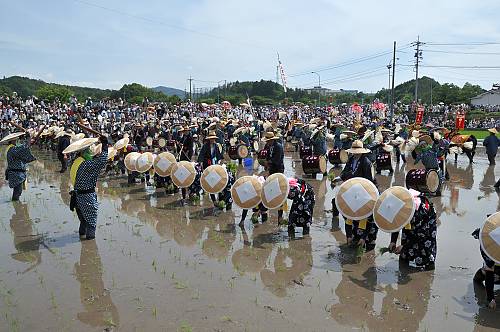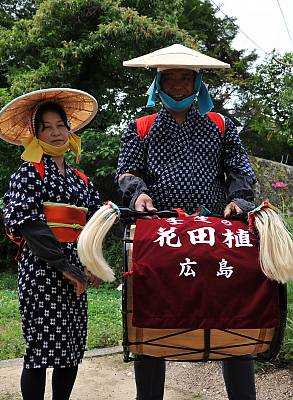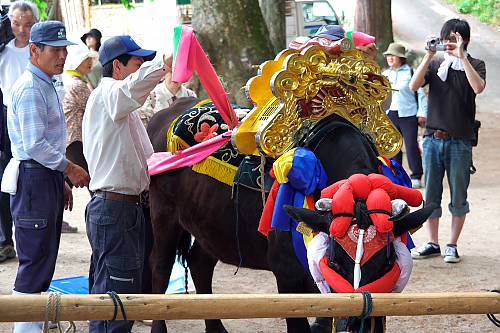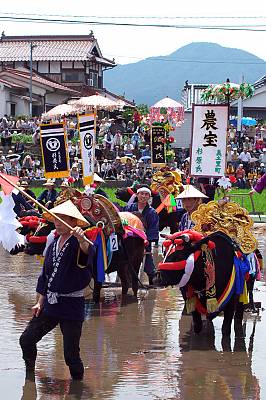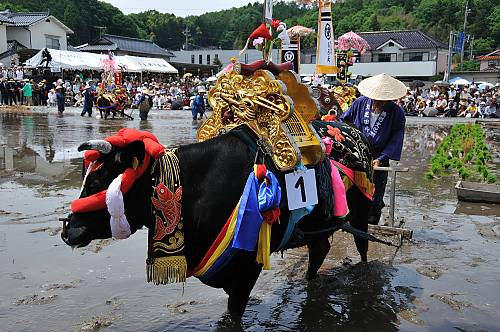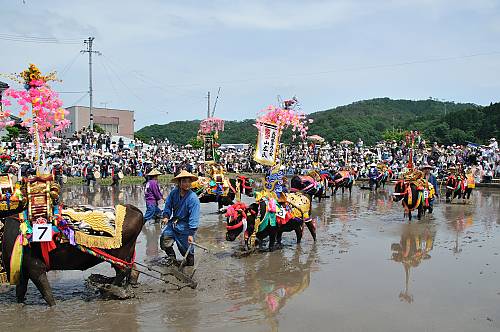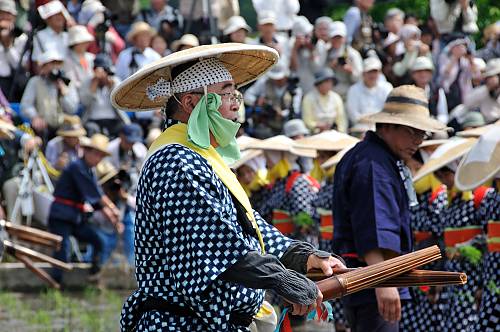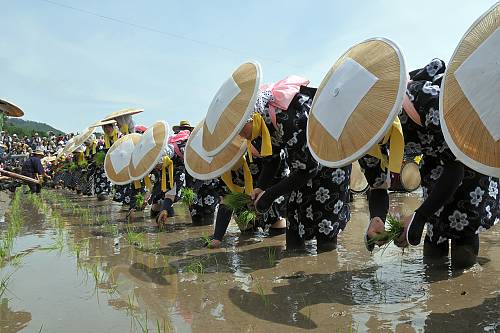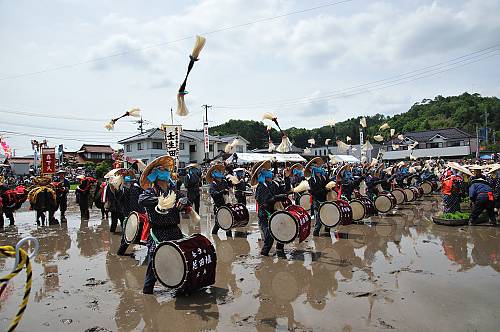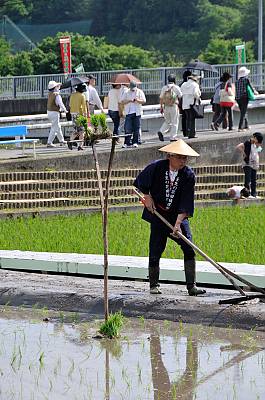Mibu no Hana Taue, ritual of transplanting rice in Mibu, Hiroshima
Inscribed in 2011 (6.COM) on the Representative List of the Intangible Cultural Heritage of Humanity

Mibu no Hana Taue is a Japanese agricultural ritual carried out by the Mibu and Kawahigashi communities in Kitahiroshima Town, Hiroshima Prefecture to assure an abundant rice harvest by celebrating the rice deity. On the first Sunday of June, after the actual rice transplanting has ended, the ritual enacts the stages of planting and transplanting. Villagers bring cattle to Mibu Shrine to be dressed with elaborately decorated saddles and colourful necklaces. An elder carrying a sacred stick then leads them to a rice field specially kept in reserve for the ritual. After the cattle have ploughed the field, colourfully dressed girls place seedlings inside a case while singing a song under the direction of an elder. Then the rice field is levelled with an implement (eburi), said to contain the deity of rice fields. The girls then transplant the seedlings one by one, walking backwards, followed by the eburi-user and the person carrying the seedlings, who level the field as they pass. Ritual songs are sung accompanied by drums, flutes and small gongs. Once this ritual transplantation is completed, the eburi is placed upside down in water with three bunches of rice seedlings. Transmission is ensured by the elders, who know the songs and music for rice planting and oversee the ritual’s smooth execution.
